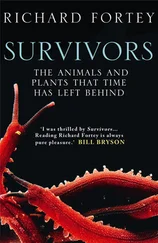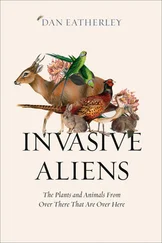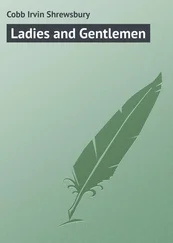Andrew H. Cobb - Herbicides and Plant Physiology
Здесь есть возможность читать онлайн «Andrew H. Cobb - Herbicides and Plant Physiology» — ознакомительный отрывок электронной книги совершенно бесплатно, а после прочтения отрывка купить полную версию. В некоторых случаях можно слушать аудио, скачать через торрент в формате fb2 и присутствует краткое содержание. Жанр: unrecognised, на английском языке. Описание произведения, (предисловие) а так же отзывы посетителей доступны на портале библиотеки ЛибКат.
- Название:Herbicides and Plant Physiology
- Автор:
- Жанр:
- Год:неизвестен
- ISBN:нет данных
- Рейтинг книги:5 / 5. Голосов: 1
-
Избранное:Добавить в избранное
- Отзывы:
-
Ваша оценка:
- 100
- 1
- 2
- 3
- 4
- 5
Herbicides and Plant Physiology: краткое содержание, описание и аннотация
Предлагаем к чтению аннотацию, описание, краткое содержание или предисловие (зависит от того, что написал сам автор книги «Herbicides and Plant Physiology»). Если вы не нашли необходимую информацию о книге — напишите в комментариях, мы постараемся отыскать её.
Discover the latest developments in herbicide and weed biology Herbicides and Plant Physiology,
Arabidopsis
Herbicides and Plant Physiology
Herbicides and Plant Physiology — читать онлайн ознакомительный отрывок
Ниже представлен текст книги, разбитый по страницам. Система сохранения места последней прочитанной страницы, позволяет с удобством читать онлайн бесплатно книгу «Herbicides and Plant Physiology», без необходимости каждый раз заново искать на чём Вы остановились. Поставьте закладку, и сможете в любой момент перейти на страницу, на которой закончили чтение.
Интервал:
Закладка:
Weeds may act as ‘green bridges’ for crop diseases, carrying the disease from one crop to another that is subsequently sown. Volunteer crops are particularly problematic in this case and can, in severe cases, negate the use of break crops as a cultural control measure for diseases. In addition, weeds can provide over‐wintering habitats for crop pests, resulting in quicker crop infestation in the spring. Ground cover provided by weeds can increase problems with slugs and with rodents, as the weeds provide greater cover and therefore reduced predation.
Table 1.6 Some examples of weeds as hosts for crop pests and diseases.
Source: Hill, T.A. (1977) The Biology of Weeds . London: Edward Arnold.
| Pathogen or pest | Weed | Crop | ||
|---|---|---|---|---|
| 1.Fungi | ||||
| Claviceps purpurea | (ergot) | Black‐grass | (Alopecurus myosuroides ) | Wheat |
| Gaeumannomyces graminis | (take‐all) | Couch (Elytrigia repens) | Cereals | |
| Plasmodiophora brassicae | (clubroot) | Many crucifers | Brassicas | |
| 2.Viruses | ||||
| Tobacco ringspot | Dandelion | ( Taraxacum officinale ) | Tobacco | |
| Cucumber mosaic | Chickweed | ( Stellaria media ) | Many crops | |
| 3. Nematodes | ||||
| Ditylenchus dipsaci | (eelworm) | Chickweed | ( Stellaria media ) | Many crops |
| Spurrey | ( Spergula arvensis ) | |||
| 4. Insects | ||||
| Aphis fabae | (black bean aphid) | Fat hen | ( Chenopodium album ) | Broad and field beans |
In 1994 and 1995 there were several severe outbreaks of the disease brown rot in potato in several European countries, especially in The Netherlands, which was possibly exported to other countries via infected seed potatoes. This extremely virulent pathogen ( Pseudomonas solanacearum , syn. Burkholderia solanacearum , syn. Ralstonia solanacearum ) causes a vascular ring rot in the developing tuber and causes a major loss of yield. Although often considered a soil‐borne organism, it was not found to persist for long periods in the soil following the harvest of infected crops. However, it was found to survive in the aquatic roots of infected woody nightshade ( Solanum dulcamara ) growing at the edge of irrigation channels. Thus, it may be the case that the pathogen overwinters in this wild host and is leaching into watercourses used to irrigate the crop, thus spreading the disease. This perennial plant is now being eradicated from potato‐growing areas. Several other species could also act as alternative hosts to the pathogen, including Solanum nigrum and Tusilago farfara , but further work is needed to confirm this.
1.5 Biology of weeds
Knowledge of the biology of a weed species is essential to the design of management strategies for that weed. An understanding of the life cycle of a species can be exploited in order to identify vulnerable times when weed management and control might prove more successful.
1.5.1 Growth strategies
According to Grime (1979), the amount of plant material in a given area is determined by two principal external factors, namely stress and disturbance. Stress phenomena include any factors that limit productivity, such as light, nutrient or water availability; and disturbance implies a reduction in biomass by factors such as cultivation, mowing or grazing. The intensity of both stress and disturbance can vary widely, with four possible combinations. However, only three growth strategies have evolved, as shown in Table 1.7. Although plants are unable to survive both highly stressed and disturbed environments, the other strategies have major significance to weed success.
Ruderals are the most successful agricultural weeds. These plants have typically rapid growth rates and devote most of their resources to reproduction. Because they inhabit recently disturbed environments there is little competition with other plants for resources, which therefore can be obtained without difficulty. They are generally short‐lived ephemeral annuals that occupy the earliest phases of succession. Conversely, biennial and perennial weeds often employ a more competitive growth strategy in relatively undisturbed conditions. They use their resources perhaps less for seed production and more for support tissues, for example, to provide additional height for the interception of light, or more extensive root systems to obtain more water and minerals. Rapid growth rate may still be evident with high rates of leaf turnover. The third growth strategy, exhibited by the stress tolerators, is to reduce resource allocation to vegetative growth and seed production, so that the survival of relatively mature individuals is ensured in high‐stress conditions. Consequently, they have slow growth rates and are commonly found in unproductive environments.
Many arable weeds have characteristics common to both competitors and ruderals, and are referred to as competitive ruderals. Indeed, most of the annuals listed in The World’s Worst Weeds (Radosevich and Holt, 1984) fit into this category, and are found in productive sites where occasional disturbance is expected. Examples include arable land that is cultivated, and meadows and grassland that are grazed or mowed. Interestingly, most crop plants also adopt a competitive ruderal strategy with their rapid growth rates and relatively large seed production. Competition between crop and weed is then related to their relative abilities to exploit the resources available.
The practice of growing crops in monoculture has exerted a considerable selection pressure in the evolution of weeds. Many characteristics have evolved that contribute to weed success and the main ones are listed in Table 1.8. Fortunately, not all of these features are present in any one weed species, yet each character may give the weed a profound competitive advantage in a given situation. Some of these characteristics are discussed in more detail in the following sections of this chapter.
Table 1.7 Growth strategies of plants.
Source: Hill, T.A. (1977) The Biology of Weeds . London: Edward Arnold.
| Intensity of disturbance | Intensity of stress | |
|---|---|---|
| High | Low | |
| High | Death | Ruderals |
| Low | Stress tolerators | Competitors |
Table 1.8 The ‘successful’ weed.
Source: Adapted from Baker, H.G. and Stebbins, G.L. (1965) The Genetics of Colonising Species . New York: Academic Press.
| Characteristic | Example species |
|---|---|
| 1. Seed germination requirements fulfilled in many environments | Senecio vulgaris |
| 2. Discontinuous germination (through internal dormancy mechanisms) and considerable longevity of seed | Papaver spp. |
| 3. Rapid growth through the vegetative phase to flowering | Cardamine hirsuta |
| 4. ‘Seed’ production in a wide variety of environmental conditions | Poa annua |
| 5. Continuous seed production for as long as conditions for growth permit | Urtica urens |
| 6. Very high ‘seed’ output in favourable environmental conditions | Chenopodium album |
| 7. Self‐compatible but not completely self‐pollinating | Alopecurus myosuroides |
| 8. Possession of traits for short‐ and long‐distance seed dispersal | Galium aparine |
| 9. When cross‐pollinated, unspecialised pollinator visitors or wind pollinated | Grass weeds in general |
| 10. If a clonal species, has vigorous vegetative growth and regeneration from fragments | Cirsium arvense |
| 11. If a clonal species, has brittleness of leafy parts ensuring survival of main plant | Taraxacum officinale |
| 12. Shows strong inter‐specific competition by special mechanisms (e.g. allelopathic chemicals) | Elytrigia repens |
| 13. Demonstrates resistance to herbicides through a number of resistance mechanisms | Alopecurus myosuroides |
Invasive species have received far greater research focus in recent years (see, for instance, Shaw and Tanner, 2008 for a review), and DAISIE (Delivering Alien Invasive Species Inventories for Europe) currently reports 10,822 invasive species in Europe (this figure is for all invasive species, not just plants). Alien species present a real threat to biodiversity, and a number of political drivers have been put into place to combat their spread and reduce the occurrence of a number of alien species, including plants. These measures include the Convention of Biodiversity and the EU 2010 Halting Biodiversity Loss, both of which identify invasive weeds as being a key factor in biodiversity loss.
Читать дальшеИнтервал:
Закладка:
Похожие книги на «Herbicides and Plant Physiology»
Представляем Вашему вниманию похожие книги на «Herbicides and Plant Physiology» списком для выбора. Мы отобрали схожую по названию и смыслу литературу в надежде предоставить читателям больше вариантов отыскать новые, интересные, ещё непрочитанные произведения.
Обсуждение, отзывы о книге «Herbicides and Plant Physiology» и просто собственные мнения читателей. Оставьте ваши комментарии, напишите, что Вы думаете о произведении, его смысле или главных героях. Укажите что конкретно понравилось, а что нет, и почему Вы так считаете.











